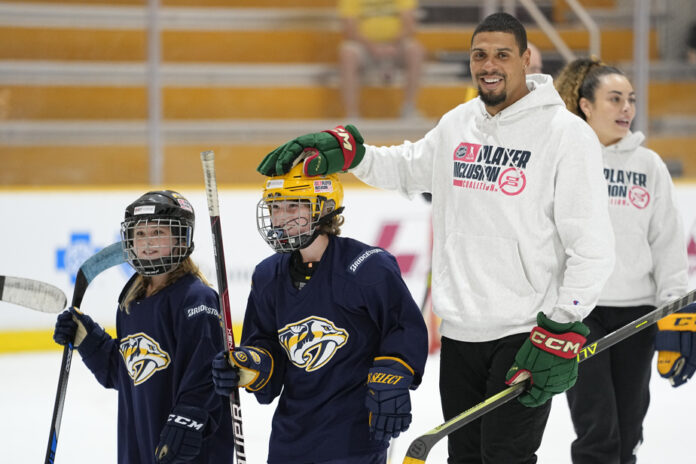(Nashville) When she started playing hockey in the early 1990s, Julie Chu was basically the only girl in the arena. More than 30 years later, what at the time aroused curiosity has become perfectly normal. This confirms to the 41-year-old American that change is possible. But also that it takes time.
Chu was in Nashville on Tuesday for the launch of the Players Coalition for Inclusion. It is a group of athletes, active or retired, whose objective is to promote diversity in hockey. The Coalition’s informal credo: after consultations, reflections or recommendations, it’s time for action. The NHL and the Players Association injected $1 million into the new entity, whose co-chairs are Anson Carter and P.K. Subban.
About twenty hockey players – men and women – are the first faces of the Coalition. Among these, people from ethnic minorities (Georges Laraque, Ryan Reaves and Sarah Nurse, for example) or from First Nations (Ethan Bear, Brigitte Lacquette, etc.), but also allies who do not belong to minorities cultural. These founding members all chose an organization to sponsor in their respective community and gave it money through the Coalition’s action fund. Because, it is argued, change cannot only pass through complex institutional structures. It must be practiced on the ground floor, one player, one team at a time.
All this so that diversity is no longer just a vague idea, but a new normal.
“I walk down the street, I go to the mall or to schools, and I see the diversity. I want this same community, that of our neighborhoods, to feel that hockey is for them, ”abounds Mark Fraser. This ex-player is now manager of culture and inclusion at the Toronto Maple Leafs. Even though he’s only 36, racial slurs he heard when he was playing minor hockey. Things have changed, he says. But the road ahead is still very, very important.
“The work we are doing is not for tomorrow or next year. We will only see the fruit of it in decades, he says. It is not a question of financial resources. Institutionally, change takes time. »
So he too hammers home the importance of “education” through well-known figures, people of influence. He appeals to the young players who will be drafted these days: even if the vast majority will be from white and privileged families, “if you educate them on their role, they will connect with young people who are less represented”. “Everyone has a role to play,” he concludes.
There was, however, a certain irony in witnessing the launch of a coalition for inclusion in the presence of Gary Bettman, when he had announced two days earlier that the NHL was abolishing the wearing of themed jerseys during periods of warming up.
The refusal of some players to wear a rainbow jersey for Pride Nights, in support of the LGBTQ community, has caused controversy over the past season. Russian athletes have invoked threats in their native country, while others have fallen back on religious grounds. Teams also changed their plans at the last minute, causing a chorus of criticism.
If the abandonment of these sweaters seems to go against the current of inclusion, the members of the Coalition do not make much of it.
Julie Chu, who is in a relationship with former Canadian hockey player Caroline Ouellette, insists: “The vast majority of players are inclusive. »
“They wore the sweater and understood why they were doing it,” she continues. Yes, for me it was difficult to see [this refusal], I would prefer that everyone support [the cause]. But a lot of great things, related to Pride Nights, have been skipped over because of a few players. If we look at what the organizations have done beyond the warm-up period, there have been a lot of positives. »
Also, she recalls, the very creation of the Coalition serves to fuel this “conversation”. “There is plenty of room to grow. If it wasn’t, we wouldn’t be needed! »















